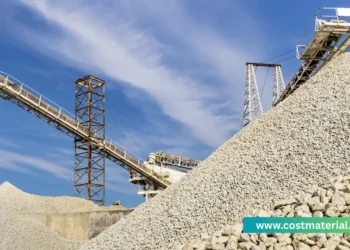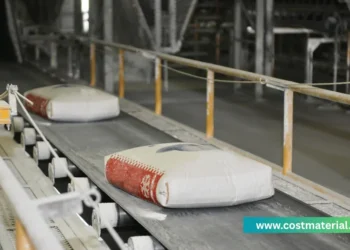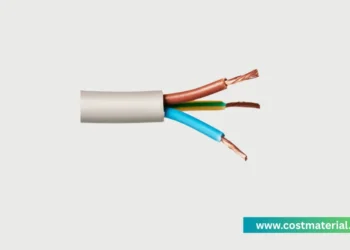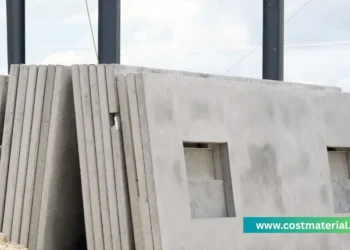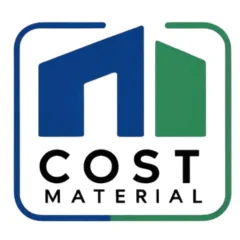Gravel is a fundamental material in construction, used for road bases, drainage, concrete mixing, and landscaping. Prices vary depending on type, size, and location. If you’re budgeting for a project in 2024, this guide provides updated gravel price list in the Philippines, including regional breakdowns and reliable sources. But before we dive into the unit cost, lets learn first what is gravel and its different types in construction.
What is Gravel?
Gravel is one of the most fundamental and versatile construction materials used worldwide, particularly in the Philippines where infrastructure development continues to grow. Essentially, gravel consists of small, loose fragments of rock that range in size from 2mm to 75mm in diameter. These rock particles can be naturally formed through years of erosion from larger stones or mechanically produced by crushing rocks in quarries. What makes gravel particularly valuable is its combination of durability, drainage capability, and cost-effectiveness, making it indispensable for various construction and landscaping applications.
Types of Gravel and Their Specific Applications
Not all gravel is the same—different types are classified based on size, shape, and origin, each serving distinct purposes:
G1 Gravel (10-20mm): This medium-sized gravel is commonly used as a base material for roads, pavements, and building foundations. Its compact nature provides excellent stability and load-bearing capacity, making it ideal for heavy construction projects.
G2 Gravel (20-40mm): Slightly larger than G1, G2 gravel is primarily used in drainage systems, backfill, and slope protection due to its ability to allow water to pass through while maintaining structural integrity.
Crushed Gravel (3/4″ or 3/8″): Mechanically crushed to specific dimensions, this type is often mixed with concrete or asphalt to enhance strength and durability. It’s a popular choice for driveways, walkways, and parking lots.
Washed Gravel: This variety undergoes a cleaning process to remove dust and fine particles, resulting in a cleaner, more uniform material. It’s frequently used in high-quality concrete mixes, septic systems, and decorative landscaping.
Pea Gravel: Characterized by its smooth, rounded edges and small size (about 8-10mm), pea gravel is primarily used for aesthetic purposes, such as garden pathways, playgrounds, and decorative ground cover.
River Gravel: Naturally smoothed by water erosion, this type is often used in landscaping projects, water features, and drainage solutions where a more polished appearance is desired.
Why Gravel is Essential in Construction and Landscaping
Gravel plays a crucial role in both large-scale infrastructure projects and small residential applications. Here’s why it’s so important:
1. Excellent Drainage Properties
Unlike solid surfaces, gravel allows water to percolate through, reducing the risk of flooding and soil erosion. This makes it ideal for French drains, septic systems, and foundation bedding.
2. Cost-Effective and Readily Available
Compared to other construction materials like concrete or asphalt, gravel is more affordable and widely accessible, especially in regions with abundant quarry resources.
3. Durability and Low Maintenance
Gravel is highly resistant to weathering and heavy loads, making it a long-lasting solution for road bases, driveways, and industrial yards. Unlike paved surfaces, it doesn’t crack and requires minimal upkeep.
4. Eco-Friendly and Sustainable
Since gravel is a natural material, it has a lower environmental impact compared to synthetic alternatives. Many types can also be recycled from demolished structures, reducing waste.
5. Versatility in Landscaping
Beyond construction, gravel enhances outdoor spaces by providing aesthetic appeal, weed suppression, and improved walkability in gardens and public areas.
Whether you’re constructing a highway, building a house, or designing a garden, selecting the right type of gravel is crucial for performance and longevity. By understanding the differences between G1, G2, crushed, and decorative gravel, you can make an informed decision that meets both functional and budgetary needs.
Average Gravel Prices 2024 in the Philippines
Below is a nationwide summary of gravel costs per cubic meter (cu.m.).
Philippines Gravel Price List (2024)
| Item | Unit | Price (PHP) |
|---|---|---|
| Gravel G1 (10-20mm) | cu.m. | 1,200 - 1,500 |
| Gravel G2 (20-40mm) | cu.m. | 1,000 - 1,300 |
| Gravel 3/4" (Crushed) | cu.m. | 1,300 - 1,600 |
| Gravel 3/8" (Crushed) | cu.m. | 1,400 - 1,800 |
| Gravel Base Course | cu.m. | 1,100 - 1,400 |
| Washed Gravel (10mm) | cu.m. | 1,500 - 1,900 |
| Gravel for Drainage | cu.m. | 900 - 1,200 |
| Gravel for Road Base | cu.m. | 1,000 - 1,300 |
| Crushed Gravel (Mix) | cu.m. | 1,200 - 1,500 |
| Pea Gravel (Small Stones) | cu.m. | 1,800 - 2,200 |
Need an Excel copy of this table? Download here
2024 Gravel Price List by Region (Philippines)
Here’s a regional breakdown of gravel prices in the Philippines for 2024, based on location-specific data from suppliers, DPWH regional reports, and construction material databases.
| Region | Gravel Type | Unit | Price Range (PHP) |
|---|---|---|---|
| Metro Manila | G1 (10-20mm) | cu.m. | 1,400 - 1,800 |
| Washed Gravel (10mm) | cu.m. | 1,800 - 2,300 | |
| Calabarzon | G2 (20-40mm) | cu.m. | 1,100 - 1,400 |
| Crushed Gravel (3/4") | cu.m. | 1,300 - 1,600 | |
| Central Luzon | Base Course Gravel | cu.m. | 1,000 - 1,300 |
| Pea Gravel | cu.m. | 1,700 - 2,100 | |
| Western Visayas (Iloilo, Bacolod) | G1 Gravel | cu.m. | 1,200 - 1,500 |
| Drainage Gravel | cu.m. | 950 - 1,250 | |
| Central Visayas (Cebu) | G2 Gravel | cu.m. | 1,300 - 1,600 |
| Washed Gravel | cu.m. | 1,700 - 2,000 | |
| Davao Region | G1 Gravel | cu.m. | 1,100 - 1,400 |
| Road Base Gravel | cu.m. | 1,000 - 1,300 | |
| Northern Mindanao (Cagayan de Oro) | Crushed Gravel (3/8") | cu.m. | 1,400 - 1,700 |
| CAR (Cordillera) | River Gravel | cu.m. | 1,500 - 2,000 |
Need an Excel copy of this table? Download here
Gravel Prices by Region (2024)
Transportation and quarry availability affect costs. Here’s a regional comparison:
1. Metro Manila (NCR)
G1 Gravel: ₱1,400 – ₱1,800
Washed Gravel: ₱1,800 – ₱2,300
Prices are higher due to delivery fees from nearby provinces like Rizal and Bulacan.
2. Calabarzon (Cavite, Laguna, Batangas, Rizal, Quezon)
G2 Gravel: ₱1,100 – ₱1,400
Crushed Gravel (3/4”): ₱1,300 – ₱1,600
Cheaper due to direct quarry access (e.g., Rizal gravel pits).
3. Central Luzon (Pampanga, Bulacan, Nueva Ecija)
Base Course Gravel: ₱1,000 – ₱1,300
Pea Gravel: ₱1,700 – ₱2,100
Bulacan suppliers offer bulk discounts for large projects.
4. Western Visayas (Iloilo, Bacolod)
G1 Gravel: ₱1,200 – ₱1,500
Drainage Gravel: ₱950 – ₱1,250
Sourced from Antique quarries; lower demand keeps prices stable.
5. Central Visayas (Cebu, Bohol)
G2 Gravel: ₱1,300 – ₱1,600
Washed Gravel: ₱1,700 – ₱2,000
Cebu’s urban projects drive demand, increasing costs slightly.
6. Davao Region & Mindanao
G1 Gravel: ₱1,100 – ₱1,400
Road Base Gravel: ₱1,000 – ₱1,300
Local quarries in Davao del Norte keep prices competitive.
7. Cordillera (CAR) – Baguio, Benguet
River Gravel: ₱1,500 – ₱2,000
Limited supply and manual extraction raise costs.
Factors Affecting Gravel Prices
Quarry Location – Nearer sources = lower transport costs.
Gravel Type – Washed and specialty gravel (e.g., pea gravel) cost more.
Seasonal Demand – Prices may rise during peak construction months (dry season).
Government Regulations – DPWH-approved gravel may have standardized pricing.
Conclusion
Gravel prices in the Philippines range from ₱900 to ₱2,300 per cu.m., depending on type and location. For accurate quotes, contact local suppliers in your area before purchasing.
Professional References
DPWH (Department of Public Works and Highways) – 2024 Price Monitoring (Official benchmark for construction materials)
PHILCON PRICES – Construction Material Database (Updated contractor cost estimates)
Local Quarry Directories – Bulacan, Rizal, and Cebu gravel supplier lists
Builder’s Depot – Retail Price List (For small-scale purchases)
Did you find this guide helpful? Share it with fellow builders and homeowners! For more construction material price list, check our other blog post.

